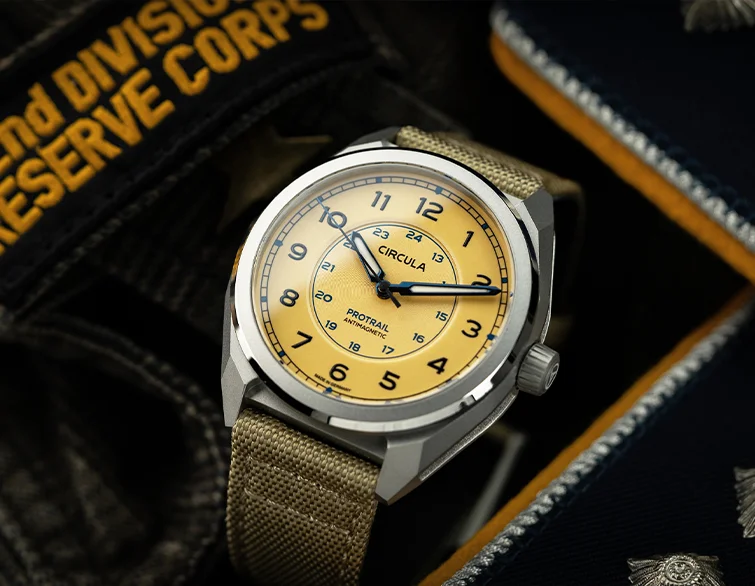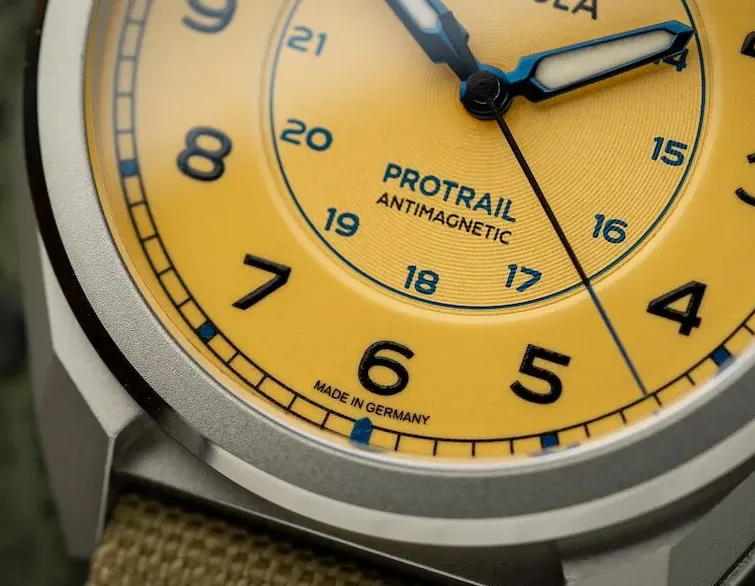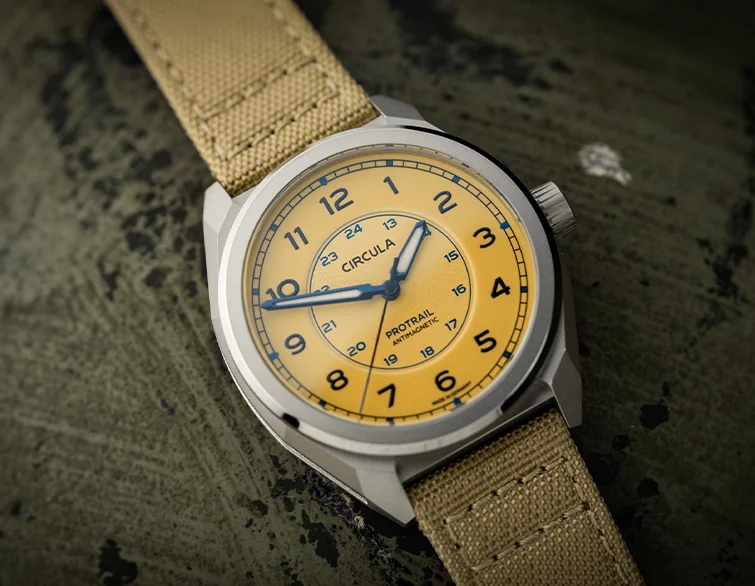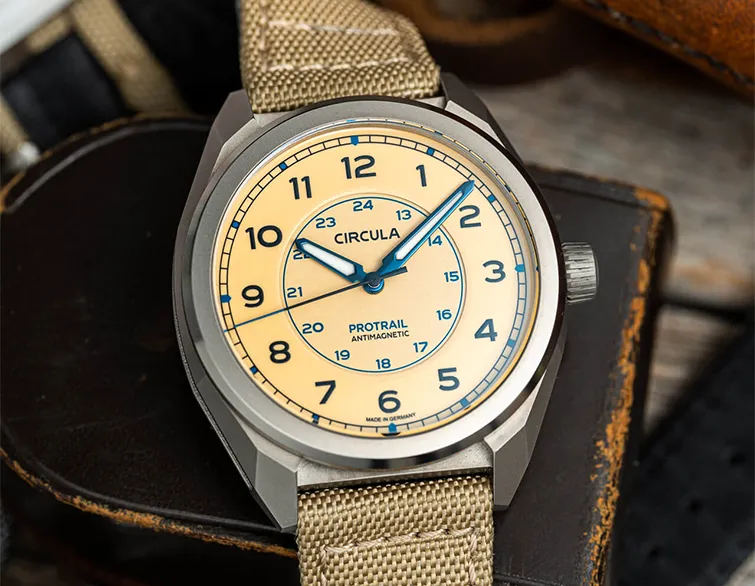Anti-magnetic watches
Safe protection against magnetic fields
It is clear that magnets and mechanical watches are not a good combination. Nobody would think of holding a magnet to an automatic watch. Nevertheless, magnetism is one of the most common reasons why an automatic watch runs too fast, slows down or stops completely. One solution to this problem are so-called "anti-magnetic watches", which, unlike conventional mechanical watches, are less sensitive to magnetic fields .
Before we get to the different types of anti-magnetic watches, let's first take a look at the magnetic fields that exist in everyday life and why magnetism can have a negative effect on the accuracy of watches. At the end of this article, we will look at how you can tell whether a watch is magnetized and what options are available to demagnetize the watch.
Magnetic fields in everyday life
In addition to shocks, magnetic fields can also have a negative effect on the accuracy of watches. The first thing that springs to mind when you think of a magnetic field is a magnet. However, in addition to classic magnets such as those found on bag fasteners or fridge magnets, electrical devices such as hand mixers, cordless vacuum cleaners, tower PCs, soundbars or even loudspeakers also cause magnetic fields.
For this reason, a non-anti-magnetic automatic watch that has been placed on a soundbar for several hours, for example, may subsequently run very imprecisely or even stop. Very few people are aware that this soundbar is operated by a magnet and that this causes a magnetic field (even in standby mode!), which in turn affects the accuracy of the watch.
But why do magnets or magnetic fields have such a strong effect on mechanical watches?

The influence of magnetic fields on watches
In order to understand why magnets have such a strong effect on mechanical watches, we will briefly explain the structure and function of these watches. Of particular importance here is the wafer-thin balance spring which, together with the balance wheel, forms the "heart" of the watch and ensures that a mechanical watch ticks correctly.
If the movement is exposed to a magnetic field and the hairspring is made of a ferromagnetic material such as iron or nickel, the hairspring is magnetized. Depending on the strength of the magnetic field, this has a smaller or greater effect on the accuracy of a watch. The spectrum ranges from deviations of several minutes to several hours per day! With particularly strong magnetic fields, a watch can even stop completely.
This is because a magnetized balance spring can become "stuck" and therefore no longer oscillate as "roundly" as a non-magnetized balance spring. Before we come to the watches that are insensitive to magnetic fields, let's take a brief look at the history of the anti-magnetic watch.
The history of the antimagnetic watch
The history of anti-magnetic watches began over 100 years ago. The first watch of this type was developed as early as 1915. The development of anti-magnetic watches was already necessary at the beginning of the 20th century, as mechanical watches were already negatively affected by magnetic fields at that time. For example, the electric motors of locomotives or the magnetic deflection coils of radar screens in aircraft interfered with the accuracy of watches. The first wristwatch series with magnetic field protection was produced in 1930 and in the 1940s, the first watch model was launched on the market that protected the movement from magnetic fields using the principle of the so-called Faraday cage or soft iron cage.

Types of antimagnetic watches
Nowadays, two types of magnetically insensitive watches in particular have become established, which we will look at in more detail: antimagnetic watches with a soft iron cage and, since around 2000, watches with spiral springs made of silicon or other non-magnetic materials such as Glucydur.
Anti-magnetic watches
with soft iron cage
In this type of watch, the entire movement is encased in a so-called soft iron cage to protect it from the influence of magnets. Soft iron consists of unalloyed iron with a high degree of purity and is characterized by the fact that it can be magnetized very easily, but cannot be permanently magnetized. It absorbs the magnetism and quickly releases it again, thus reliably and permanently protecting the movement from the influence of magnets. A soft iron cage for watches consists of the dial, a movement ring and the base. To ensure that the movement is completely enclosed, watches with a soft iron cage typically have a screw-down crown and no date display.
The precise Sellita SW200-1 movement in the Elaboré version, which is installed in the Circula ProTrail Field Watch, is protected from magnetic fields of up to 80,000 A/m (or almost 100,000 microtesla μT, or 1,000 gauss) by the soft iron cage. For comparison: a commercially available soundbar emits around 5000 μT. The housing is also scratch-resistant up to 1,200 Vickers.
These special features make the Circula ProTrail a robust companion for everyday life and outdoor activities!

Watches with hairsprings made of non-magnetic materials
In anti-magnetic watches of this type, the materials of the hairsprings contain as few ferromagnetic components as possible and are therefore insensitive to magnetic influences. A frequently used material is silicon, which is not only non-magnetic but also corrosion-resistant. However, as silicon reacts strongly to temperature fluctuations, silicon coil springs are often coated with a wafer-thin layer of silicon oxide.
Another non-magnetic material used for coil springs is Glucydur. The alloy of copper, beryllium and iron is anti-magnetic, corrosion-resistant, very hard and also resistant to temperature fluctuations
How to find out if a watch is magnetized
Since not all watch movements are protected with soft iron cages or have a non-magnetic hairspring, it is of course important to find out whether a watch with accuracy problems has simply been (accidentally) magnetized or whether other problems are the cause. The easiest way to find out whether a watch has been magnetized is to place a compass next to the watch. If the compass needle is deflected, this is a sign that the watch is magnetized. A watchmaker can also check whether the watch is magnetized. If the unusually high rate deviation has another cause, then the watch is in the best hands with a watchmaker.
Demagnetizing a watch
Once the watchmaker has determined that the watch is magnetized, he can quickly demagnetize the watch again. Another method is to purchase a (watch) demagnetizer yourself. These devices are available in different price ranges.
And if you would like to have a watch whose movement is protected against magnetic fields of up to 80,000 A/m, then you should definitely take a look at the Circula ProTrail!

